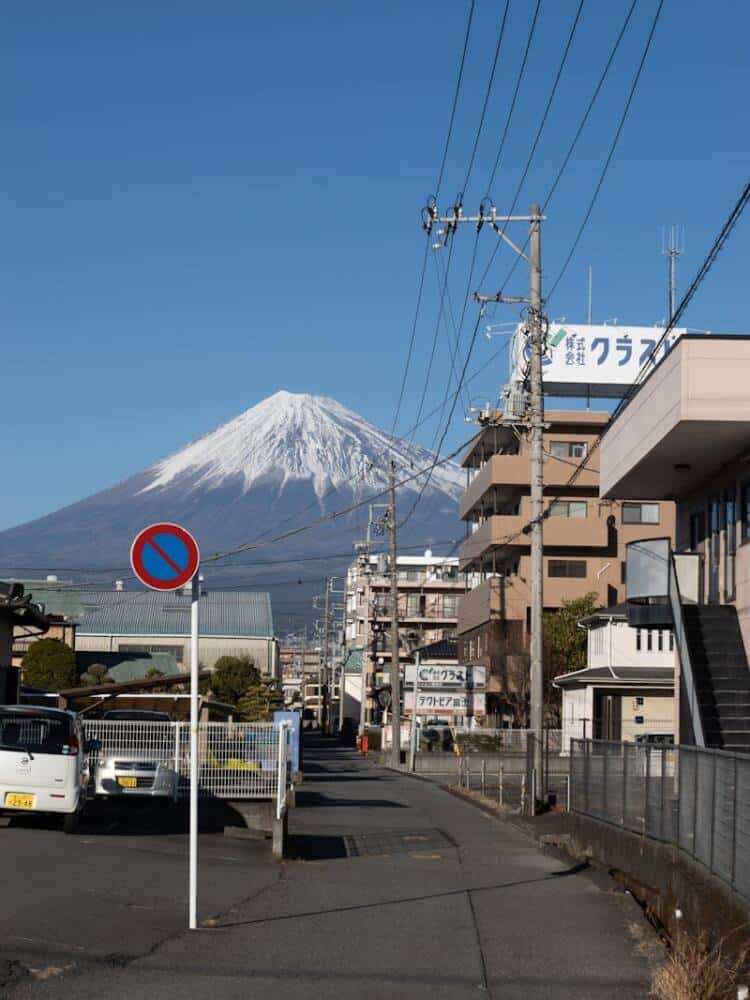There are new parking fees at Mount Fuji being proposed to avoid over congestion by tourists. Is this a good idea for Japanese tourism?

Page Contents
New Parking Fees At Mount Fuji
The city of Fuji-Yoshida in Yamanashi Prefecture plans to implement parking fees at previously free lots to manage the issues associated with the increase in tourism, particularly around Mount Fuji. This ordinance proposal was introduced on February 5 and will take effect in April.
Residents have expressed concern about the challenges posed by the influx of tourists, leading local officials to consider solutions that would enable visitors to contribute to the expenses incurred by the surge in tourism.
Two specific locations in the city have become especially popular among foreign tourists, creating congestion and difficulties for residents.
Popular Tourist Spots

One of the most frequented spots is Arakurayama Sengen Park. Here, visitors capture images of the iconic Chureito Pagoda set against the majestic Mount Fuji backdrop.
Parking spaces near the park are limited and located on narrow residential streets, resulting in long waits for available spots. This situation has caused significant traffic jams, disrupting the daily lives of local residents.
Another favored location is near the Honcho 2-chome intersection. Tourists often take pictures of Mount Fuji visible at the end of a narrow national road topped with quaint shopping areas.
This picturesque view has drawn many visitors, sometimes leading them to crouch in the middle of busy roads for the perfect photo opportunity, which raises safety concerns.
Traffic Management Solutions
To address these challenges, the city has employed traffic attendants and added public restrooms. The annual maintenance costs for these measures are about 100 million yen (approximately $652,000).
Starting in April, the four parking lots near Arakurayama Sengen Park will charge fees. Two of these lots, which were built recently, will accommodate around 200 vehicles.
The two lots closest to the park will have a fee of 1,500 yen for up to six hours, while those located slightly farther will charge 1,000 yen for the same duration.
This approach aims to encourage tourists to use designated parking areas rather than taking up space on local streets.
Changes in Parking Rates
At the Honcho 2-chome intersection, the fees for three municipal parking spaces will increase from 100 yen to 200 yen for the first hour and from 50 yen to 100 yen for each additional 30 minutes.
Revenue generated from these changes is expected to support essential tourism-related expenses, improving the overall experience for visitors while also addressing the concerns of residents.
Tourism to Arakurayama Sengen Park saw a remarkable increase, with approximately 240,000 visitors in 2016. This figure skyrocketed to 1.15 million in 2023, more than tripling from the previous year, and is projected to reach about 1.51 million in 2024.
Many tourists arrive in rental cars or taxis from major regions like Tokyo and Kansai, further contributing to the traffic situation.
Establishing a Task Force
In response to this overtourism issue, the city established a committee in July last year, bringing together representatives from three internal departments.
Following consultations with stakeholders and local community groups, a special task force was formed in January to advance the paid parking initiative.
Mayor Shigeru Horiuchi acknowledged the importance of balancing tourist influx with the needs of the local community. He expressed gratitude for the visitors while stating, “We are identifying the challenges and implementing measures.”
The city aims to minimize disturbances to residents while ensuring a satisfying experience for tourists.
Further Initiatives
The city is also looking into the introduction of an entrance fee for Arakurayama Sengen Park.
Moreover, it will end the complimentary access for tour bus parking.
This parking lot, managed by the local tourism service, will adopt a fee structure ranging from 3,000 yen to 5,000 yen per bus starting in April.
It accommodates up to nine buses, most of which transport foreign tourists who typically make brief stops without significantly contributing to the local economy.
City officials anticipate that charging for bus parking might reduce the number of tourists from certain tour groups.
This expected decline could help stabilize visitor numbers, aligning them more closely with the capacity and needs of the area.
Related Posts:
Kyotos One-Day Bus Passes Cancelled: Measures Against Tourist Overcrowding
My writing focuses on the various aspects of Japanese lifestyle, from traditional tea ceremonies and flower arrangement to modern fashion trends and pop culture. Through my articles, I aim to share my passion for Japan and provide readers with a glimpse into the rich and diverse world of Japanese culture.
I believe that the key to understanding Japanese lifestyle is to appreciate the balance between tradition and innovation. While Japan has a rich cultural heritage that dates back centuries, it is also a country that is constantly evolving and embracing new ideas and technologies.
Whether you’re interested in learning about the latest fashion trends in Tokyo, or want to explore the ancient art of calligraphy, my writing will take you on a journey through the many facets of Japanese lifestyle. So join me as we explore the beauty and complexity of this fascinating culture together!




